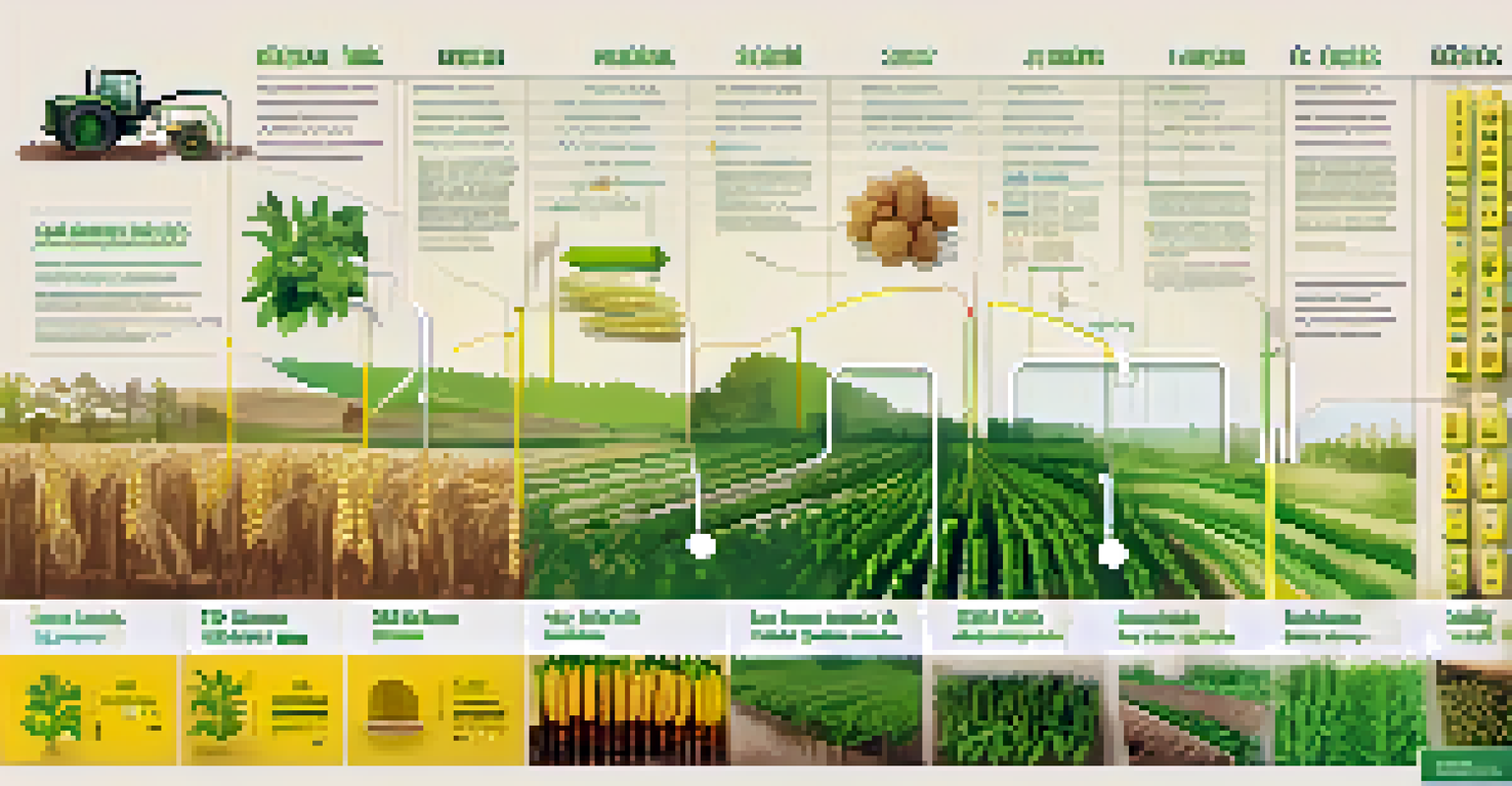Public Perception of Genetic Engineering in Agriculture

What is Genetic Engineering in Agriculture?
Genetic engineering in agriculture involves altering the DNA of plants and animals to achieve desired traits. This can include developing crops that are resistant to pests, drought, or diseases. For instance, genetically modified (GM) corn may be engineered to withstand specific insects, reducing the need for chemical pesticides. By enhancing traits in this way, farmers aim to increase yields and improve food security.
The greatest challenge of the future will be to feed the growing world population while preserving the environment and ensuring sustainable development.
The process of genetic engineering is distinct from traditional breeding methods, which involve crossbreeding and selection over many generations. Genetic engineering allows for more precise changes and can introduce traits from completely different species. This scientific approach is often viewed with both excitement and skepticism, depending on public perception.
Understanding genetic engineering is crucial because it sets the stage for debates around safety, ethics, and environmental impact. As agriculture faces challenges like climate change and a growing population, these discussions become increasingly relevant.
Historical Context of Genetic Engineering in Agriculture
The history of genetic engineering in agriculture dates back to the 1970s when scientists first developed techniques to manipulate DNA. The introduction of genetically modified organisms (GMOs) began with crops like soybeans and corn in the 1990s. This technology promised to revolutionize farming by increasing efficiency and reducing reliance on harmful pesticides.

However, the rollout of GMOs was met with public concern and controversy. Early adopters faced pushback from consumers worried about food safety and environmental impacts. Over time, these concerns have evolved but still play a significant role in shaping public opinion today.
Genetic Engineering Explained
Genetic engineering in agriculture modifies DNA to create crops and animals with desired traits, enhancing food security.
Understanding this historical context helps clarify why some people embrace genetic engineering while others remain hesitant. It also highlights the need for ongoing education and transparent communication to foster informed public discourse.
Current Public Sentiment Towards Genetic Engineering
Public sentiment around genetic engineering in agriculture is mixed, with some supporting its benefits and others expressing deep concerns. Surveys indicate that while many people appreciate the potential for increased food production, fears about health and environmental consequences persist. These conflicting views often lead to polarized discussions in communities and media.
Genetic engineering is not just a science; it is a social and ethical issue that touches on the very nature of life.
One major factor influencing public opinion is trust in regulatory bodies and the companies behind GMOs. Consumers often question the safety assessments conducted by agencies and the motivations of agricultural corporations. This skepticism can lead to resistance against genetically modified products, even when scientific consensus supports their safety.
As conversations around food production and sustainability continue to evolve, so too will public sentiment. It's essential for stakeholders to engage in open dialogues that address concerns and highlight the science behind genetic engineering.
The Role of Media in Shaping Perceptions
Media plays a crucial role in shaping public perceptions of genetic engineering in agriculture. News outlets, documentaries, and social media influencers can amplify both positive and negative narratives surrounding GMOs. For instance, sensationalist headlines may heighten fears about food safety, while balanced reporting can help demystify the science.
Moreover, the rise of social media has given a platform to various voices, including activists, scientists, and farmers. This democratization of information can lead to a broader understanding of genetic engineering but also contributes to the spread of misinformation. It’s important for consumers to critically evaluate the sources of their information.
Public Sentiment is Divided
While some embrace the benefits of genetic engineering, many harbor concerns about health and environmental impacts.
As the media landscape continues to evolve, so too must the strategies used to communicate about agricultural biotechnology. Effective communication that combines transparency and education can help bridge the gap between science and public perception.
Ethical Considerations in Genetic Engineering
Ethics plays a significant role in the public perception of genetic engineering in agriculture. Concerns about 'playing God' with nature and the long-term consequences of modifying organisms are common among critics. People grapple with questions about the moral implications of altering the genetic makeup of living beings.
Additionally, there are worries about the socio-economic impacts of genetic engineering, particularly regarding smallholder farmers. Will they benefit from these advancements, or will larger corporations dominate the market? Such ethical dilemmas are central to the ongoing debates about agricultural biotechnology.
Addressing these ethical considerations is vital for creating a more informed public dialogue. Engaging diverse stakeholders—including ethicists, farmers, and consumers—can help ensure that various perspectives are considered in the conversation about genetic engineering.
Environmental Concerns Related to Genetic Engineering
Environmental concerns are a significant aspect of public perception regarding genetic engineering in agriculture. Critics often raise alarms about the potential for biodiversity loss, as genetically modified crops may outcompete native species. This could disrupt local ecosystems and lead to unintended consequences.
Moreover, the use of herbicide-resistant crops has been linked to the increased use of certain chemicals, which can affect soil health and water quality. These environmental impacts fuel skepticism and opposition among those who prioritize ecological sustainability.
Ethics and Environmental Impact
Ethical considerations and environmental concerns play a significant role in shaping debates around genetic engineering.
However, proponents argue that genetic engineering can also lead to environmental benefits, such as reduced pesticide use and improved resource efficiency. Balancing these perspectives is essential for fostering a well-rounded understanding of the environmental implications of agricultural biotechnology.
The Future of Genetic Engineering in Agriculture
Looking ahead, the future of genetic engineering in agriculture will likely be shaped by ongoing public perception and regulatory developments. As technology advances, new methods like CRISPR gene editing are emerging, allowing for even more precise modifications. This could lead to crops that are not only resistant to pests but also more nutritious and resilient to climate change.
However, public acceptance remains a critical factor for the widespread adoption of these technologies. Engaging in proactive communication and education can help build trust and alleviate concerns around safety and ethics. Farmers, scientists, and policymakers will need to work together to foster a collaborative environment.

Ultimately, the future of genetic engineering in agriculture will hinge on balancing innovation with public sentiment. By prioritizing transparency and inclusiveness, we can navigate the complexities of this vital field and ensure that it serves the needs of both people and the planet.